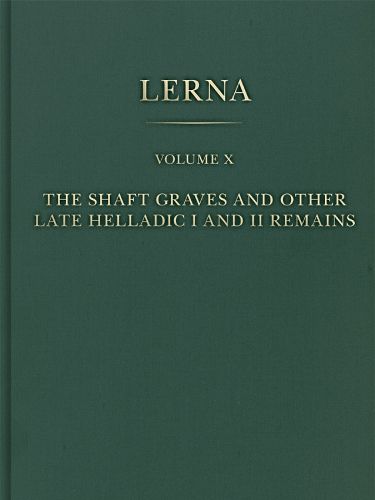Readings Newsletter
Become a Readings Member to make your shopping experience even easier.
Sign in or sign up for free!
You’re not far away from qualifying for FREE standard shipping within Australia
You’ve qualified for FREE standard shipping within Australia
The cart is loading…






This volume presents funerary and domestic remains from the Late Helladic (LH) period at the settlement of Lerna, an important prehistoric site on the Gulf of Argos excavated by the ASCSA in the 1950s. Most of the material derives from the fill of two disturbed shaft graves from the later half of the LH I period, whose large ceramic and faunal assemblages are complemented by finds from an additional nine graves and domestic remains. Stratigraphic analysis of the shaft graves and surrounding remains contextualize the ceramics and miscellaneous objects recorded in the accompanying catalogues. Analysis of the pottery establishes a clear subdivision of LH I table ware into two phases and suggests a close relationship between kin groups at Lerna and at Kolonna on Aigina. Contributions by Sturt Manning on radiocarbon dating of the shaft grave fills, Ian Whitbread and Hans Mommsen on petrographic and chemical analysis of the pottery, and David S. Reese on the faunal remains shed further light on this important material. The combined evidence suggests that Lerna was continually settled throughout the LH I period, with decline in the early LH IIA period and abandonment in the LH IIB period. While publication of intact monumental tombs often focuses on the elite occupants and their precious grave goods, the value of the Lerna shaft graves lies in what they reveal about the hundreds of living participants in the funerary rituals.
$9.00 standard shipping within Australia
FREE standard shipping within Australia for orders over $100.00
Express & International shipping calculated at checkout
This volume presents funerary and domestic remains from the Late Helladic (LH) period at the settlement of Lerna, an important prehistoric site on the Gulf of Argos excavated by the ASCSA in the 1950s. Most of the material derives from the fill of two disturbed shaft graves from the later half of the LH I period, whose large ceramic and faunal assemblages are complemented by finds from an additional nine graves and domestic remains. Stratigraphic analysis of the shaft graves and surrounding remains contextualize the ceramics and miscellaneous objects recorded in the accompanying catalogues. Analysis of the pottery establishes a clear subdivision of LH I table ware into two phases and suggests a close relationship between kin groups at Lerna and at Kolonna on Aigina. Contributions by Sturt Manning on radiocarbon dating of the shaft grave fills, Ian Whitbread and Hans Mommsen on petrographic and chemical analysis of the pottery, and David S. Reese on the faunal remains shed further light on this important material. The combined evidence suggests that Lerna was continually settled throughout the LH I period, with decline in the early LH IIA period and abandonment in the LH IIB period. While publication of intact monumental tombs often focuses on the elite occupants and their precious grave goods, the value of the Lerna shaft graves lies in what they reveal about the hundreds of living participants in the funerary rituals.